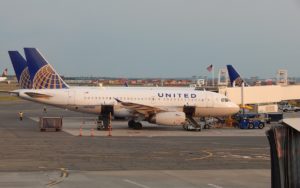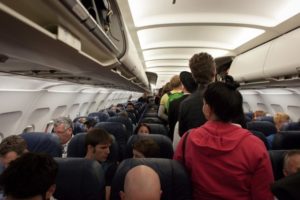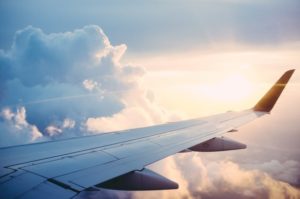The Blind Spot That Could Have Saved United and American Airlines Millions

The hijacking happened within 20 milliseconds.
The airport security, the flight staff, the passengers, Dr. David Dao,
the American Airlines flight attendant, and the mother kicked off the
flight, were all hijacked by the fear centers of the brain, the Amygdala.
They were unconscious of it, but it created a blind spot in their
decision making and caused them to react from a place of emotion
and perceived threat.

As a result United Airlines lost $225 million in market value and created a
public relations nightmare. The American Airlines flight attendant was
suspended and the mother, who was kicked off the American Airline flight,
has to deal with the traumatic aftermath of the ordeal.
By examining the nature of social interaction and decision making we begin
to understand how these ordeals were preventable. All of the players
involved, from Dr. David Dao, to the Airport Security Staff, to the American
Airlines Flight Attendant, all made decisions based on emotional triggers.
This is a serious blind spot individuals and organizations can’t afford to miss.
Understanding the correlation between emotional and social triggers, and
perceived threats in the brain, can help individuals and organizations
prevent catastrophic situations like the one United and American Airlines
experienced. The emerging field of Neuroleadership can give us a guide on
how to use this information and create tools to change behaviors.
The Institute of Neuroleadership created the SCARF model which identifies
5 social triggers that our brain perceives as a threat. SCARF is an acronym
for Status, Certainty, Autonomy, Relatedness and Fairness.
When one of these 5 triggers are engaged the brain goes into a protective
fight or flight mode through the neural networks of the Amygdala and Limbic
Brain. As a result the Executive Brain shuts down and we aren’t able to
access higher levels of intelligence. We need this area of the brain to be
functioning at its highest potential since we use the networks of the
Executive Brain to make decisions, initiate moral reasoning, and self
regulate.
If we look at the players involved in the United and American Airlines
tragedies we can see that their Status, Certainty, and Fairness triggers were
all hit.
The Status Trigger, in my opinion, is probably one of the most powerful
triggers. The reward centers of the brain are activated because human
beings unconsciously place a high value on status. This can be through a
“pecking order,” seniority, or feeling one is “better than.” For example, when
authority is challenged the Status Trigger is activated and an individual is
more likely to react from a place of fear induced threat. Hence, the reaction
of Dr. Dao, Chicago Airport Security, and the American Airlines Flight
Attendant.
Certainty Triggers happen when we are unsure of our future. The brain is a
pattern-identification machine and is constantly trying to predict the future.
The trust centers of the brain need certainty in order to create the right
amount of brain chemistry to feel safe. When we don’t have certainty we
prime ourselves for a fight as Cortisol, Testosterone and Norepinephrine are
released into our brain. This would affect all the players involved in both the
United and American Airlines scenarios.
Fairness triggers create a threat response when we perceive unfair equality
and exchanges. The reward centers of the brain and sometimes the insula,
the area activated when an individual experiences intense emotions such as
disgust, are engaged when we see, for example, a person being kicked off a
flight or we feel we are being singled out. Players involved here: The
passengers, Dr. David Dao, and the mom kicked off the American Airlines
flight.
Understanding how the brain processes triggers and perceives threats could
have prevented the catastrophes experienced by United and American
Airlines by:
1. Priming before a flight, before interactions, and before
communication exchanges.
2. Understand, identity, and control social triggers during conflict and
exchanges.
3. Create emotional resilience after a conflict or exchange.
The latest brain research from The Neuroleadership Institute has shown
how organizations can improve performance, engagement, motivation, solve
problems and regulate emotions. This research helps leaders create
programs to improve the quality of leadership and leadership programs.
We will always experience triggers whether we are at work, home, or
traveling. Do not allow this blind spot to create fiascos like United and
American Airlines experienced. When you can step back and identify how
triggers affect human interaction and decision making it could make the
difference between profit and market altering losses.

Learn from United and American Airlines. How are social and emotional
triggers affecting your organization, your home life and your personal life?
Leave a Reply



